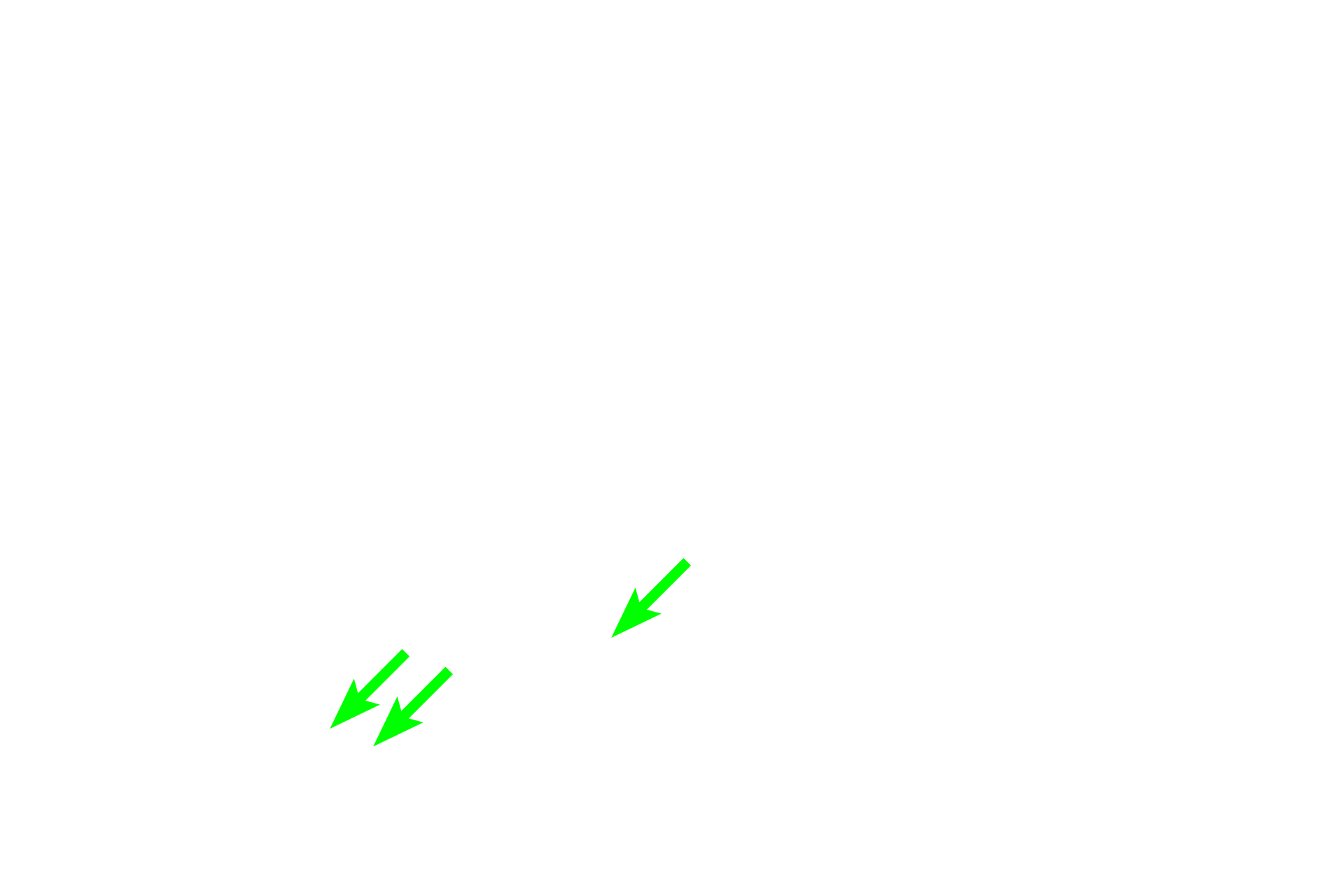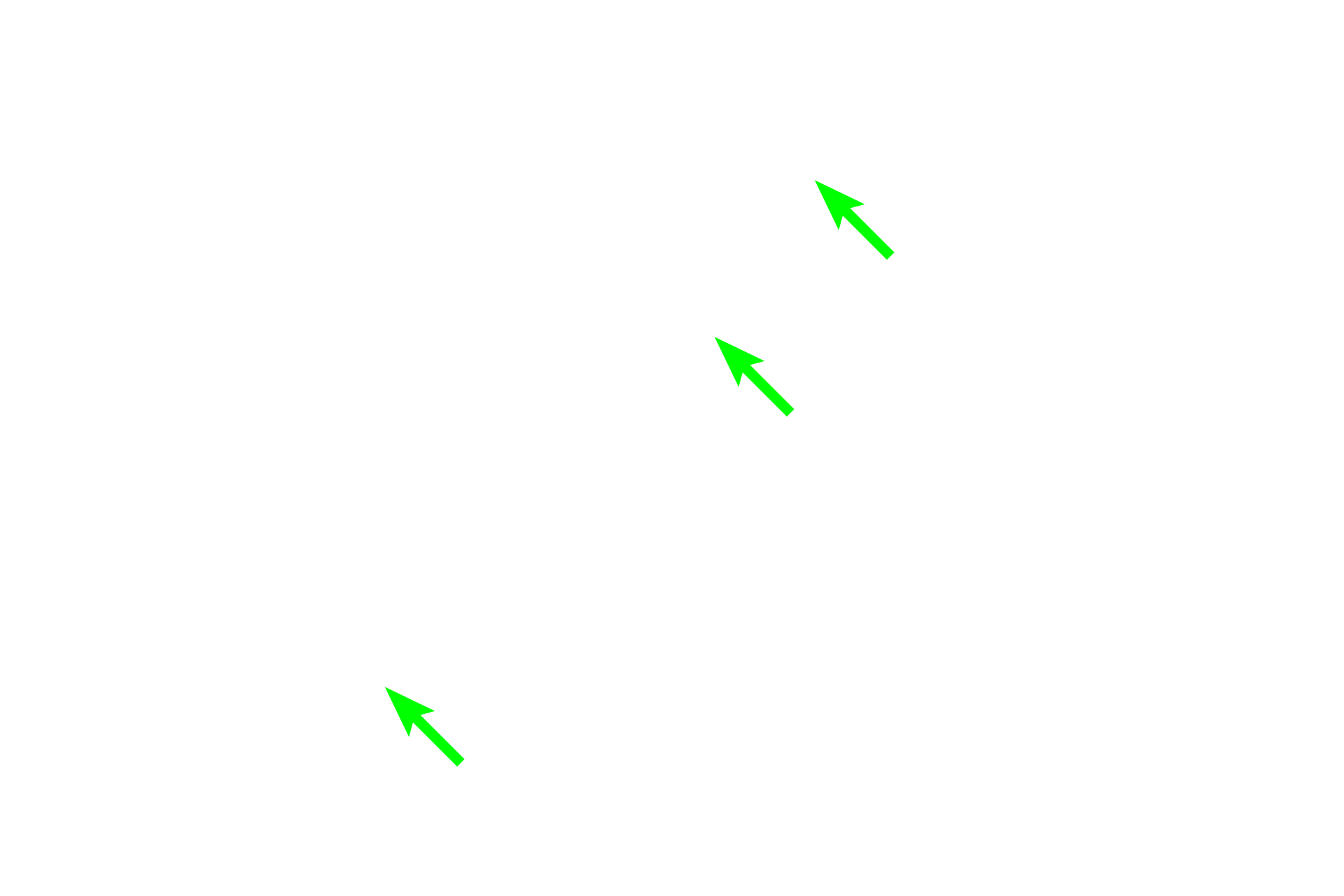
Bone: tissue components
Bone, like any other connective tissue, is composed of cells and an organic extracellular matrix of ground substance and fibers. In addition to the organic matrix, an inorganic matrix of calcium phosphate (hydroxyapatite) is deposited along collagen fibers, giving bone rigidity to serve as a framework for the body and as protection for body parts. The matrix also serves as a reservoir for calcium. Spongy woven bone, 400x

Overview >
This decalcified image shows a bone spicule (slender spike, arrows) surrounded by bone marrow tissue. Bone cells, osteoblasts, osteocytes, osteoclasts and bone-lining cells, collectively make up the endosteum which lines all interior bone surfaces. The extracellular matrix can also be identified. Numerous blood vessels in the marrow tissue are also present adjacent to the spicule.

Bone-lining cells >
Bone-lining cells are present on the surface of bone where no active growth or resorption is occurring. They are highly flattened cells and are thought to provide maintenance and nutritional support for osteocytes and may have osteoprogenitor capacity.

Osteoblasts >
Osteoblasts lie on the surface of bone and produce the organic components of the extracellular matrix, both ground substance and collagen fibers. Osteoblasts are large, plump cells filled with the organelles necessary for protein production. They occur in the endosteum where bone deposition is occurring. Osteoblasts are also located on the external surfaces of bone associated with the periosteum.

- Osteoid (organic matrix) >
Formation of the extracellular matrix of bone begins with deposition of the organic portion, osteoid, by osteoblasts. Osteoid is composed of ground substance and collagen fibers, and appears as a pale band on the bone surface immediately beneath the active osteoblasts. Osteoid rapidly becomes mineralized with calcium phosphate (hydroxyapatite) forming the majority of the matrix.

Osteocytes >
Osteocytes are osteoblasts that have surrounded themselves with matrix and, therefore, lie within (rather than on) bone. Although not seen here, numerous processes radiate out from each cell body, communicating with other osteocytes and with surface cells. Osteocytes lie within spaces called lacunae, seen here as a halo surrounding each cell body. Osteocytes maintain the bone matrix.

Extracellular matrix >
After osteoid is formed, it becomes mineralized with an inorganic matrix of calcium phosphate. The abundance of collagen and calcium produces an eosinophilically-stained extracellular matrix.

Osteoclast >
Osteoclasts lie on the surface of bone where they resorb bone, forming small depressions called Howship’s lacunae as they do so. Osteoclasts are large, multinucleated cells containing many lysosomes. Numerous plasma membrane infoldings face the bone to increase surface area during bone resorption. Osteoclasts are also located on the external surfaces of bone associated with the periosteum. Osteoclasts are derived from the monocyte/macrophage cell lineage.

- Howship's lacuna >
Osteoclasts, the third type of bone cell, lie on the surface of bone as a component of the endosteum and periosteum. They resorb bone, forming tiny depressions called Howship’s lacunae as they do so. Osteoclasts are large, multinucleated cells containing many lysosomes. Numerous infoldings face the bone to increase surface area during bone resorption.

Blood vessels >
Numerous vessels (sinusoids) travel in the bone marrow tissue that surrounds the spicule.